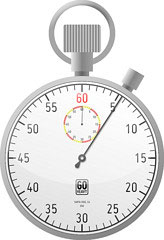Topics
Topics

Measuring & Analyzing Task Times
Continuous Data Efficiency is one of the cardinal aspects of a product’s usability. The amount of time it takes for a user to complete a task is one of the best predictors of efficiency because it: Illustrates the slightest variability (in seconds) that are more difficult to detect in other measures like errors Is a

What is an Acceptable Level of Quality for Usability?
Usability measurements involve human performance and because human behavior is inherently error prone, reaching the goal of 6σ isn’t necessary to proclaim success. Manufacturing companies that are considered producing “high-quality” products are usually somewhere between 4σ and 5σ. The benchmarks and targets that we set in our tests will necessarily need to be more forgiving

The Importance of Task Order Randomizing during a Usability Test
Minimize Lurking Variables Getting Warmed Up Without task randomization, so-called lurking variables can taint your data–usually not enough that it’s devastating but often it’s noticeable. One lurking variable when analyzing task times is the user’s tendency to perform better on the later tasks and worse on the earlier tasks. It’s human nature: someone hands you

What’s the 1.5σ Shift and Does it Apply to Software Usability?
If you compare the sigma value on this site with other values published in most six sigma literature, it’s important to know that a 1.5 σ “shift” is usually added. For example, if you see a sigma value of 1.08σ on measuringusability.com and want to compare it to other sources then add 1.5. The resulting

Why 6σ is Not Limited to Manufacturing Processes
Six Sigma History and Overview Six Sigma was started in manufacturing for processes that are duplicated thousands and millions of times in something like the placement of a spot weld on sheet metal on a power turbine and being able to predict the failure rate of that part’s weld. If you can measure and control

How Do You Calculate a Z-Score/ Sigma Level?
The benefit of using a z-score in usability metrics was explained in “What’s a Z-Score and why use it in Usability Testing?” this article discusses different ways of calculating a z-score. The short answer is: It depends on your data and what you’re looking for. If you’ve encountered the z-score in a statistics book you

The Risks of Discounted Qualitative Studies:
The discerning usability analyst should employ a mix of both qualitative and quantitative methods when discovering usability problems. The risks of relying heavily on a qualitative approach can lead to a severe misdiagnosis especially when usability problems are difficult to detect. This article is a response to Nielsen’s “The Risk of Quantitative Studies” and shows